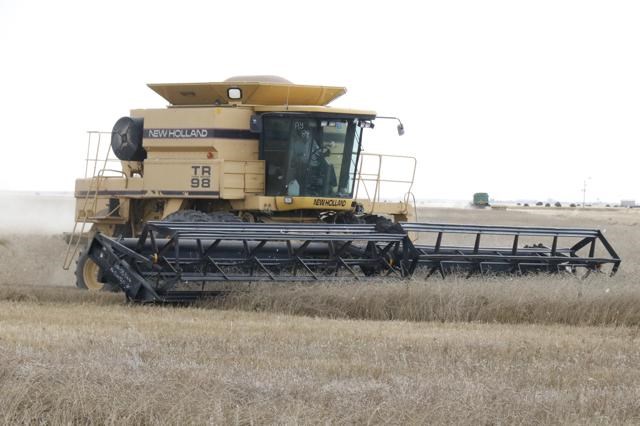Almost all of the 2019 crop was taken off for harvest, Sask. Agriculture reported in their final crop report for the year.
The southeast region has 94 per cent of the crops combined, with the Weyburn crop district (2A) at 97 per cent completed, and the Radville-Lake Alma-Minton area (3ASE) at 92 per cent completed. The province as a whole has 93 per cent of the crops combined.
Most producers in the southeast region were able to wrap up harvest operations, while a few farmers will need the weather to cooperate in order to get the remainder of their crops off before winter.
As many fields remain wet, some crops may not be harvested until the spring.
Crop yields vary across the region, and there are reports of higher-than-expected yields. Crop quality across the southeast is below average for almost all crop due to varying factors such as sprouting, staining and bleaching. Crops that were harvested early on fared better for quality.
Crops which still have some in the fields include flax, which was 80 per cent combined, with nine per cent in swath and 10 per cent ready to be straight-cut; canola, which is 94 per cent combined with three per cent in swath and three per cent ready to be straight-cut; soybeans, which are 92 per cent combined with eight per cent ready to be straight-cut; chickpeas, which are 95 per cent combined, with five per cent ready to be straight-cut; barley, which are 92 per cent combined and seven per cent greenfeed; oats, which are 89 per cent combined with eight per cent greenfeed and two per cent ready to be straight-cut.
Estimated crop yields for the various grains and oilseeds were provided for the southeast region as of Nov. 18.
The estimated yield for winter wheat was 39 bushels per acre; fall rye, 42 bu/ac; hard red spring wheat, 45 bu/ac; durum, 48 bu/ac; other wheat classes, 54 bu/ac; oats, 70 bu/ac; barley, 65 bu/ac; flax, bu/ac; canola, 37 bu/ac; soybeans, 27 bu/ac; and peas, 40 bu/ac.
The yield for canaryseed in the southeast was estimated at 1,432 pounds per acre; mustard was 1,139 lbs/ac; lentils, 1,482 lbs/ac; and chickpeas, 1497 lbs/ac.
Cropland topsoil moisture in the southeast is rated as 36 per cent surplus and 64 per cent adequate. On hay land and pastures, topsoil moisture is rated as nine per cent surplus, 90 per cent adequate and one per cent short.
The average dryland hay yields for the southeast were, in tons per acre, as follows: alfalfa, one; alfalfa/brome, 1.3; other tame hay, 1.1; wild hay, 0.8; and greenfeed, 2.0.
The majority of livestock producers indicate that they have adequate to surplus supplies of feed (hay, straw, greenfeed and grain). Hay quality going into winter is rated as 41 per cent good and 59 per cent fair.
Crop reporters have indicated that winter wheat and fall rye acres are significantly down from previous years. A late harvest caused fall seeding delays for some producers.
The Farm Stress Line is available to support producers who may be struggling due to the difficult harvesete. Producers can call the Farm Stress Line at 1-800-667-4442 at any time.




